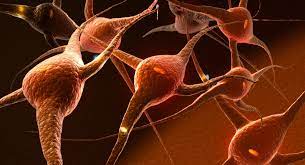

Last Updated - September 10, 2024
Brain development
Children’s brains develop fastest and are at their most ‘plastic’ or adaptable in the womb and early years of life. During this time, many millions of neural are made and then pruned. This builds the architecture of the brain upon which other forms of development will rest.
Right from birth, every time you play with your child, use silly voices, or even sing, you’re not just bonding, you’re building their brain. Find brain building tips from the NSPCC here
Building young brains with the Big Little Moments. Babies and toddlers are growing and learning every day and the little moments you share can make a big difference. From morning time to bedtime, waiting for the bus to playing together, every moment is a chance to help build a child’s brain.
The Brain Story is about how experiences shape our brains. It is a story for everyone, as we all depend on those around us for the experiences that build our brain architecture. This forms the foundation on which our future learning, behaviour and health is built. Read more from the Oxford Brain story.
Building a healthy brain. The world in which a young child grows up shapes the way their brain develops. The key to a healthy future, is a healthy start. The world around a child has a significant influence on their development so valuing the role of parents, carers and families is crucial. Find out more from the Royal Foundation, Centre for Early Childhood.
Early experiences affect the development of brain architecture, which provides the foundation for all future learning, behaviour, and health. Just as a weak foundation compromises the quality and strength of a house, adverse experiences early in life can impair brain architecture, with negative effects lasting into adulthood.
Serve & Return Interaction Shapes Brain Circuitry
A serve and return interaction is when an infant or young child babbles, gestures, or cries, and an adult responds appropriately with eye contact, words, or a hug. This responsive interaction builds and strengthens neural connections in the child’s brain that support the development of communication and social skills, as well as lifelong learning, health, and well-being.
Check out this video to learn more about serve and return and dive into the science behind it from the Center on the Developing Child.
5 Steps for Brain-Building Serve and Return
This how-to video from the Center on the Developing Child breaks down serve and return into five simple steps that are easy to do at home, or pretty much anywhere!
Download this flier from your 0 to 19 Torbay team.
